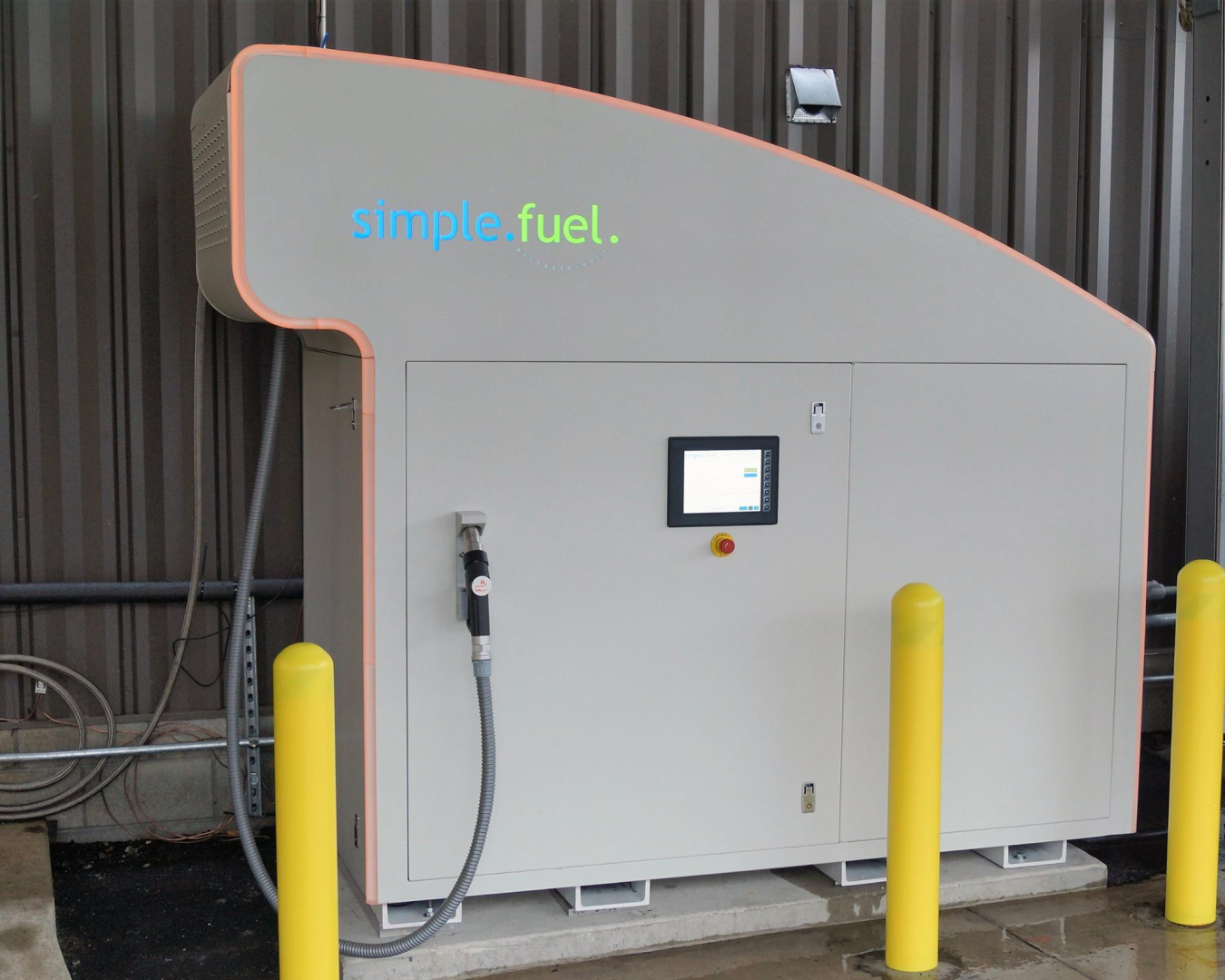Fuel cell electric vehicles (FCEVs) are some of the most advanced automobiles available. They allow for a similar driving experience to traditional...
May 8, 2017SimpleFuel's home-scale refueling appliance can provide a 1-kilogram fill—enough fuel to travel approximately 60-70 miles—to vehicles in 15 minutes or less at the required pressure to fully fill hydrogen storage tanks onboard the FCEV (700 bar) using hydrogen produced via electrolysis, a method of producing hydrogen from electricity. Photo Courtesy | SimpleFuel

SimpleFuel's home-scale refueling appliance can provide a 1-kilogram fill—enough fuel to travel approximately 60-70 miles—to vehicles in 15 minutes or less at the required pressure to fully fill hydrogen storage tanks onboard the FCEV (700 bar) using hydrogen produced via electrolysis, a method of producing hydrogen from electricity. Photo Courtesy | SimpleFuel
Fuel cell electric vehicles (FCEVs) are some of the most advanced automobiles available. They allow for a similar driving experience to traditional internal combustion engine vehicles, but with marked benefits. FCEVs have a similar driving range and fuel time, and provide higher torque, characteristic of all electric vehicles. Exactly what consumers like— with absolutely no pollution and only water vapor at the tail pipe.
And they are now available for lease and purchase in California, where there are more than 25 public stations, yet a lack of infrastructure remains a challenge for further market penetration. It’s the classic “what comes first, the chicken or the egg” scenario.
If FCEVs are going to make more than a splash in the market place, the infrastructure gap must be bridged. Today, SimpleFuel is providing the building blocks for that bridge.
As winner of the Energy Department’s $1 million H2 Refuel H-Prize last January, which challenged America’s innovators to deploy onsite hydrogen generation systems using electricity or natural gas to fuel hydrogen vehicles, SimpleFuel demonstrated a new breakthrough appliance for refueling FCEVs. The 7-foot-long enclosure with its iconic curved silhouette houses all the equipment necessary to convert water into clean hydrogen fuel. It can be used in a variety settings: homes, community centers, municipalities or small businesses, and it’s grabbing the industry’s attention by storm.
SimpleFuel is comprised of three companies—Ivys Energy Solutions and McPhy Energy North America, both based in Massachusetts, and PDC Machines, based in Pennsylvania. The challenge was to produce h2 from electricity or natural gas. Their home-scale refueling appliance can provide a 1-kilogram fill—enough fuel to travel approximately 60-70 miles—to vehicles in 15 minutes or less at the required pressure to fully fill hydrogen storage tanks onboard the FCEV (700 bar) using hydrogen produced via electrolysis, a method of producing hydrogen from electricity. The system is capable of providing up to 6 kilograms a day.
“Our device is competitive with the fastest in electric battery chargers,” said Darryl Pollica, head of Ivys Energy Solutions and the SimpleFuel team leader when speaking about fuel cell & battery electric vehicle range gained per ‘charge’ time.
But its success didn’t come without challenges. Choosing the right team and managing the tight development time frame were two challenges SimpleFuel had to tackle head on. Pollica says he was very strategic in choosing the team because he was looking for future partners: companies with proven and robust technologies in generation and compression, deep engineering capability, and demonstrated downstream commercialization capabilities.
Another challenge was understanding the various safety requirements when designing the integrated system. The idea was to have a compact design in one deployable package that you could install quickly in nearly any location, and this required a fully integrated safety approach.
Pollica focused the SimpleFuel team around a ‘beyond-compliance’ design approach with an eye toward appliance certification. Most high-capacity stations today, which can serve multiple vehicles at a time, require significant permitting and ground-work. This requires a protracted installation and $2-3 million or more investment. But with a modular compact appliance, lead time and capital costs are much less than a larger system.
“It’s enticing to people,” says Pollica. “They think, ‘I’m going to make this investment, and I’m protected in the future should my local refueling needs change because I have the ability to move this appliance to another location.’”
Modular fueling projects like these could be an integral part of the deployment of hydrogen infrastructure across the country to support more transportation energy options for U.S. consumers.
And that is what the SimpleFuel team is counting on.
“Through our participation in the H-Prize competition, we have received great exposure and interest across the industry from codes & standards organizations to federal/local government agencies to politicians and more,” he said. “That’s putting wind in our sails to commercialize.”
Pollica believes the team is poised well with partners in place to bring this product to the next level and is grateful for the Energy Department’s commitment to the H-Prize through the Office of Energy Efficiency and Renewable Energy.
“This competition is another aspect of how DOE responsibly invests in helping to promote technologies and innovation that ultimately will bring greater benefits to the country and to the larger energy security goal, and we’re happy to be a part of that.”

